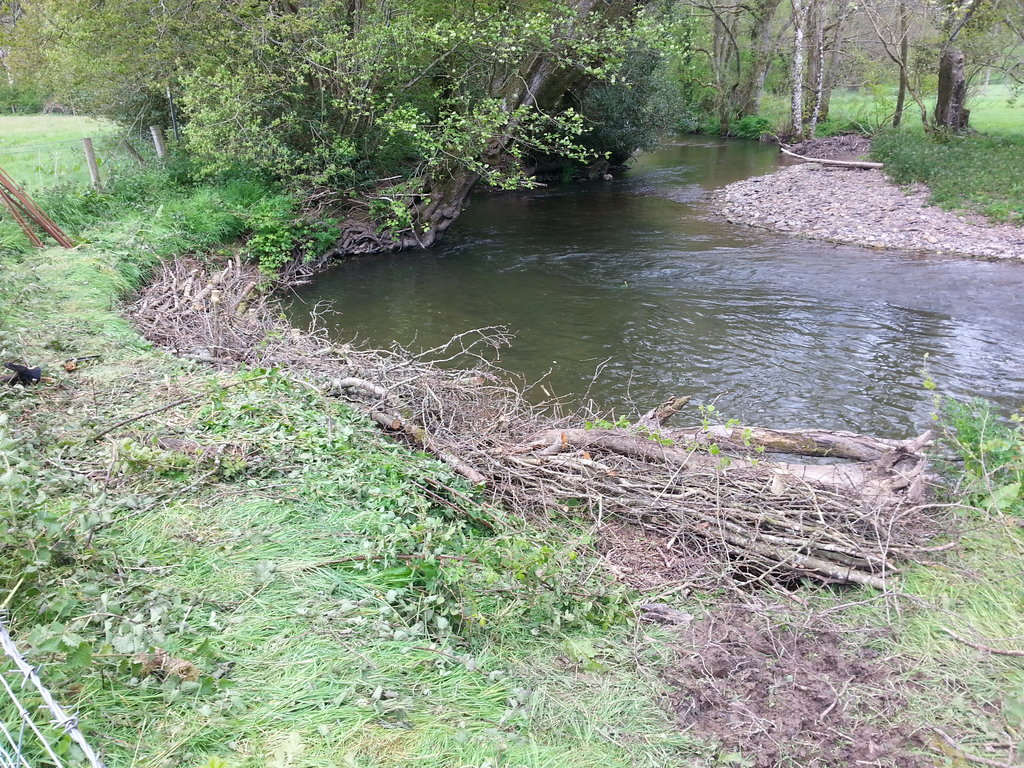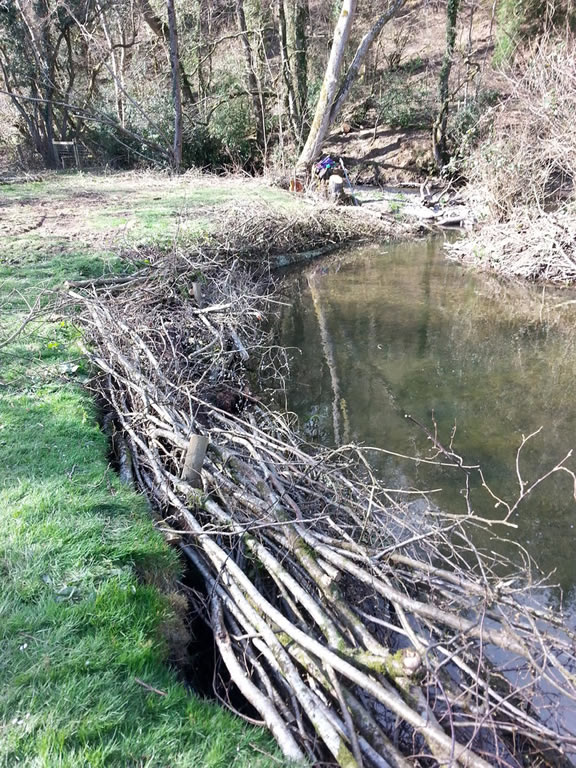 Habitat Improvement
Habitat Improvement
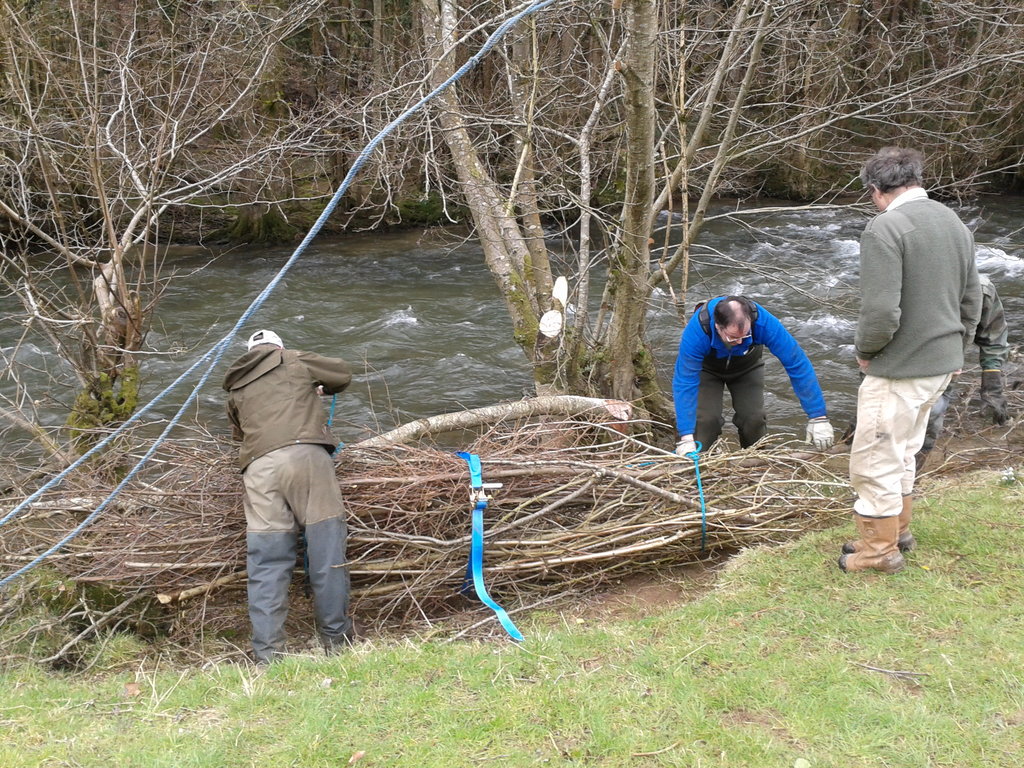 The DAA prides itself on the work it does to improve the fishing conditions on its various beats. With approximately10 kilometres of bank to care for this is a Hurculean task but one which the Association has, over the years, in keeping with its aim to protect and improve the environment, tackled with gusto.
The DAA prides itself on the work it does to improve the fishing conditions on its various beats. With approximately10 kilometres of bank to care for this is a Hurculean task but one which the Association has, over the years, in keeping with its aim to protect and improve the environment, tackled with gusto.When DAA was fortunate enough to gain its first beats on the Little Exe, (the junior tributary to the River Barle which both rise high in the Exmoor National Park together form the major part of the upper salmon and trout area of the River Exe system), it was faced with the mammoth task of correcting many years of neglect of the river resulting in very heavily shaded waters through the regrowth of abandoned tree coppicing.
In earlier times bank edge trees had been managed. The dominant species, alder, had been coppiced to provide high quality charcoal for gunpowder and artists’ charcoal but it was then abandoned so the coppiced alder stools had grown into multi stem mature old coppice with eighteen inch diameter stems upto twenty plus feet high. DAA had to deal with this neglect to let light into the river and boost the whole riverine, and marginal ecosystem. It is accepted that areas of heavy shading severely reduces invertebrate numbers and thereby fish numbers.
Initially member volunteers started the ‘restoration’ process with enthusiastic manpower, ropes and 4x4’s to ensure felled alder stems fell away from the water. Once DAA’s commitment to this restoration was demonstrable and in a way sympathetic to the whole riverine ecology it was able to gain small grants from the Exmoor National Park and the River Exe Foundation to employ a contractor with heavy machinery to help fell these mature tree stems selectively under DAA’s guidance and ‘get them onto the banks’ in the grass fields for DAA volunteers to do ‘the clearing up’.
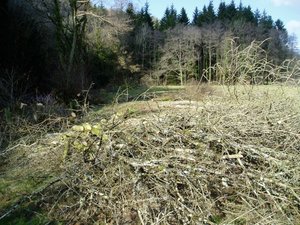 Many volunteer member days were spent over several years to let light back into the river. Most of this heavy chainsaw work concentrated on the Hele and Perry beats; some was necessary on the much longer Hollam beat but along much of this beat the bankside trees were predominately hazel which were fairly easily tackled with bow saws with the resulting ‘brush’ just needing to be moved away into the woodland for wider habitat benefit.
Many volunteer member days were spent over several years to let light back into the river. Most of this heavy chainsaw work concentrated on the Hele and Perry beats; some was necessary on the much longer Hollam beat but along much of this beat the bankside trees were predominately hazel which were fairly easily tackled with bow saws with the resulting ‘brush’ just needing to be moved away into the woodland for wider habitat benefit.The launch by the River Exe and Tributaries Association, and the on-going ‘River Exe Project, REP, in 2004 increased DAA’s rate of progress. This project was started the Little Exe’s productivity as salmon nursery and its activities were similar to DAA’s so syngergy developed between the two organisations – both needed a light and more open river with increased invertebrate numbers promoting more and fitter juvenile fish – be they trout or salmon. In this launch year DAA volunteers were trained by West Country Rivers Trust to carry out a formal ‘walkover survey’ of the lower Little Exe and then in 2005 the upper L Exe to quantify areas of different types of fish habitat. The REP funded more heavy contractor coppicing work both on and around DAA waters. As before, DAA did most of the ‘clearing up’ and also provided volunteers for wider REP work such as gravel cleaning on DAA’s River Haddeo waters to increase the availability of good salmon spawning habitat. Andrew Caldwell, sitting on both the DAA and RETA’s committees, was the REP project manager for its first nine years enabling him to promote this syngergy. In 2009, with DAA volunteers, he started Riverfly monitoring (http://www.riverflies.org/rp-riverfly-monitoring-initiative ) following a training session, run at Exebridge and in the Exmoor National Park Authority’s Dulverton headquarters for lectures and microscope work. We were fortunate to have the two main AMI, Anglers Monitoring Initiative, trainers Dr Brigitte Peacock and Dr Cyril Bennet as the course leaders and the then head of Fisheries for the Environment Agency attended as an observer in support. This ‘Riverfly’ monitoring is now done three times a year on many sites in across the whole of the upper half of the River Exe system with additional training course being run about once every two years for new volunteers. Again with DAA memberaship help it has been extended to the River Culm, a lower Exe tributary.
As part of this close working with RETS’s River Exe Project DAA volunteers provide other wider fishery help to the REP, e.g. with the REP’s salmon hatchery work and in 2015 helping survey fish eating bird numbers in the Exe’s complete system. So as well as helping to maintain and improve DA waters, DAA volunteers gain insights into the topics and techniques associated with the wider management of the River Exe. Some of these techniques and others are now being applied in this current next stage of improvement of DAA waters
This massive coppicing operation did more than remove trees to let in light; it also started work to reduce ‘diffuse pollution’: silt ingress into the river with the attendant risk of silted spawning gravels. Two sources of this diffuse were addressed: flood water scouring vegetation off the top of the banks and washing soil off into the river and ‘baying’, a common feature of neglected alder coppice where their heavy shading blocks out the light and suppresses bankside vegetation. These bare bank areas between the alders gradually have their exposed soil washed into the river so that ‘bays’ form between the trees. This baying progresses until the tree is completely surrounded by the river and soon afterwards gets totally washed away in a large spate. Both these sources of DP can be controlled by hinging, (felling after a partial cut through the stem, so the remaining link between the stool and laid stem keep the stem alive), stems along the top of the bank or by laying them across the ‘bays’ and using cut brash to infill between the laid stem and bank
.
Further progress of this technique is to lay the stems actually in the water either as hinged laving stems, or as completely cut stems secured with high tensile wire to prevent their wash away wash away by spates. As well as bank protection, cover is provided for invertebrates and for fish.
Now that the bulk of the structural work has been completed and backed up by the advice received from the Wild Trout Trust the focus has shifted to trying to enhance habitat on each of the beats as well as, where appropriate, improving casting conditions.
Typically the Association runs 3 habitat improvement work days each year before the season starts with ad hoc days at other times depending on what work is required. The type of work varies but broadly encompasses:
- Trimming back overhanging trees to enable more light to penetrate and improve fishing conditions;
- Making up brush bundles to install into the bank primarily to provide cover for juvenile fish
- Improving access to the beats by the installation of steps and the clearing of bankside vegetation;
- Installation of kickers to act as both cover and flow diverters. This is a relatively new technique for the Association and we have ongoing plans to measure the effectiveness of this technique;
- Installing fencing to prevent livestock degradation of the bank with the consequent silt infiltration;
- Felling of conifers where possible to allow regeneration of hardwood species with the consequent removal of harmful run off.
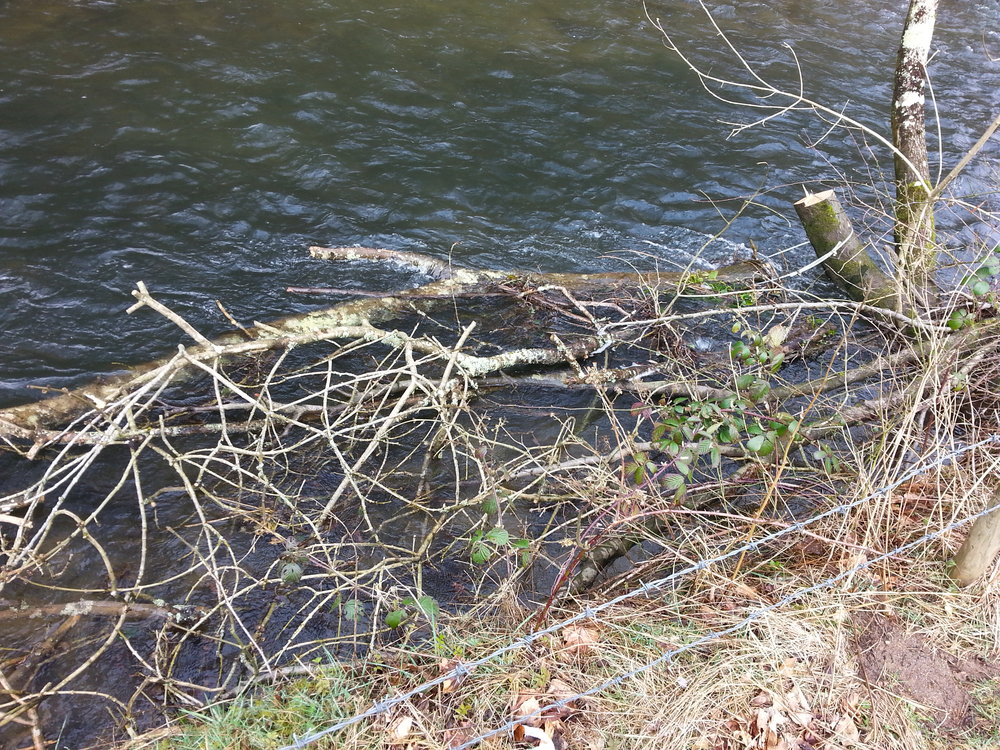 If you are interested in this aspect of the sport and particularly if you have a chainsaw certificate then please get in touch. The work parties are not all party and no work but they tend to be enjoyable days out with hopefully the reward of seeing and catching more and larger fish.
If you are interested in this aspect of the sport and particularly if you have a chainsaw certificate then please get in touch. The work parties are not all party and no work but they tend to be enjoyable days out with hopefully the reward of seeing and catching more and larger fish.